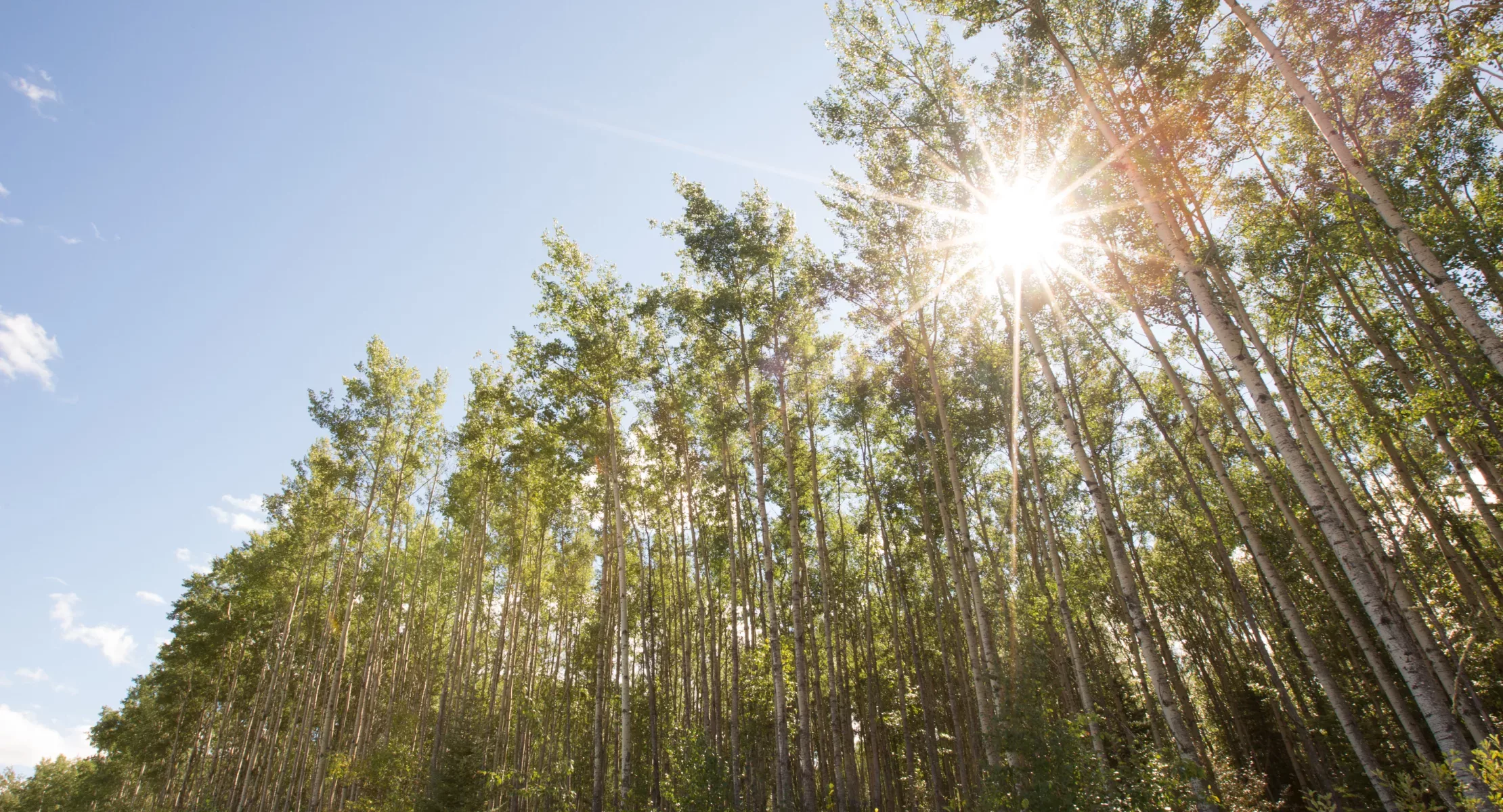Reclamation: More than just planting trees
May 2, 2024
Industry and academia viewed and discussed outcomes of a variety of reclamation practices during a two-day field tour last year aimed at sharing the latest advancements and challenges in land management and reclamation in the oil sands.
Organized by the COSIA Land Environmental Priority Area, these annual tours take representatives from member companies and academic institutions to oil sands sites to see reclamation efforts firsthand.
The two-day 2023 Reclamation Best Practices Field Tour saw 60 participants representing all member companies from COSIA (the innovation arm of Pathways Alliance) and representatives from the Northern Alberta Institute of Technology (NAIT).
“These tours aren’t show and tell, they are show and learn,” says Robert Albricht, Supervisor, Environmental Operations at ConocoPhillips Canada. “Participants visited areas that are getting ready for reclamation, under reclamation and reforested stands that are now 30 years old. They can see the whole journey of progressive reclamation.”
On the first day, the group toured East-In-Pit and South Bison Hills, two reclamation areas at the Syncrude Mildred Lake Mine, which is operated by Suncor. The following day saw the group tour reclamation areas at the ConocoPhillips Canada Surmont site, including the Surmont Regional Residence Stockpile, a long-term environmental research project underway in collaboration with NAIT.
There are many successes and challenges in oil sands reclamation. Not only is each site geographically unique, but reclamation takes place across a range of landscapes and landform settings, schedules and environmental conditions.
“Resource extraction by its nature has an impact on the landscape and industry is required to return disturbed land to equivalent land capability,” says Jack O’Neill, Director, Land Environmental Priority Area. “But reclamation is not just planting trees, it’s about creating the conditions to support an entire ecosystem. Reclamation practitioners use the best available science to design and establish desired site conditions, and then monitor these through time to learn and reduce uncertainty in predicted outcomes for similar sites.
“The tours are an opportunity for our members to share research, processes and outcomes on their sites. For participants, it’s a chance to compare sites at different stages of land management, view reclamation techniques, and discuss revegetation opportunities and challenges. It’s a huge opportunity to see theory in practice and it sparks conversations that likely would not happen otherwise.”
South Bison Hills, a former storage area for overburden, is one of the oldest and most mature reclamation areas in the industry. Reclaimed in the 1990s and early 2000s, a diverse forest community has developed, consisting primarily of upland forests with white spruce, jack pine and aspen. The area also has designed and opportunistic wetlands.
“In the early years of reclamation, practitioners and researchers focused on predicting the capability and the maturation of reclaimed landscape. South Bison Hills is several decades old, which allows us to evaluate real outcomes,” says Marty Yarmuch, Suncor’s Soil Reclamation Specialist. “It demonstrates what time can do when you start reclaiming early and give Mother Nature time.”
One example is the return of wildlife, where a range of species, including beavers, are now present in South Bison Hills. “We created the starting conditions for the reclaimed landscape to develop and now we are monitoring the ability of beavers to rapidly modify the landscape at a scale we never imagined,” Yarmuch says.
East In-Pit is a former mine pit filled with composite tailings – a technology that treats fluid tailings with gypsum and sand, turning it into a material that can be used in reclamation – and capped with straight coarse tailings and reclamation soil.
“East In-Pit is our first closure landform containing composite tailings,” says Yarmuch. “Progressive reclamation and environmental research of East In-Pit provides an opportunity to refine and develop best reclamation practices to ensure this type of closure landscape will be safe and sustainable for a range of planned end land uses.”
ConocoPhillips Canada’s eight-hectare Surmont stockpile is a unique outdoor laboratory that’s testing forest reclamation practices and techniques. “We’re introducing native species and setting the conditions for a thriving, young, self-sustaining boreal forest system to establish temporarily here,” Albricht says.
The stockpile provides habitat for a wide range of insects, mammals and birds, as well as a range of plant species, and increases the quantity and quality of material that will be used in final reclamation, providing a source of soil, woody plant material and plant propagules.
Other innovative reclamation techniques being tested at Surmont include ‘hitchhiker plugs’, where two plant species are planted together in the same nursery container. Early results show this technique leads to an increase in desirable vegetation and a way to successfully introduce more native plant species.
Elsewhere on site, a topsoil study is investigating the effects on vegetation community establishment from applying different depths of topsoil. “We want to understand how topsoil depth impacts vegetation establishment so that we can optimize the use of available topsoil at final reclamation,” Albricht explains.
Participants gave a unanimous thumbs up to this year’s tour. “It was really valuable to see and understand the stages to progressive reclamation,” said one survey respondent. Others said there was huge value in revisiting sites to see how they are developing over time.
A number noted the biodiversity evident in the landscapes, commenting on the variety of songbirds that could be heard and the beaver lodges evident on some of the water features.
A summary report of the tour’s observations, findings, lessons learned, and discussions is distributed to all participants who in turn share it within their respective organizations.
See more of our reclamation videos on our YouTube page.
